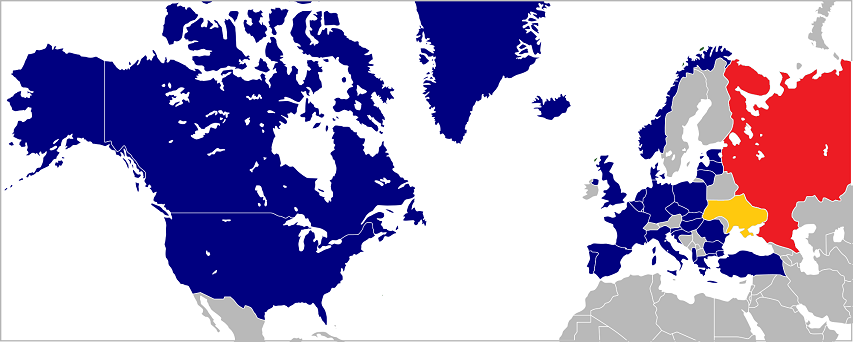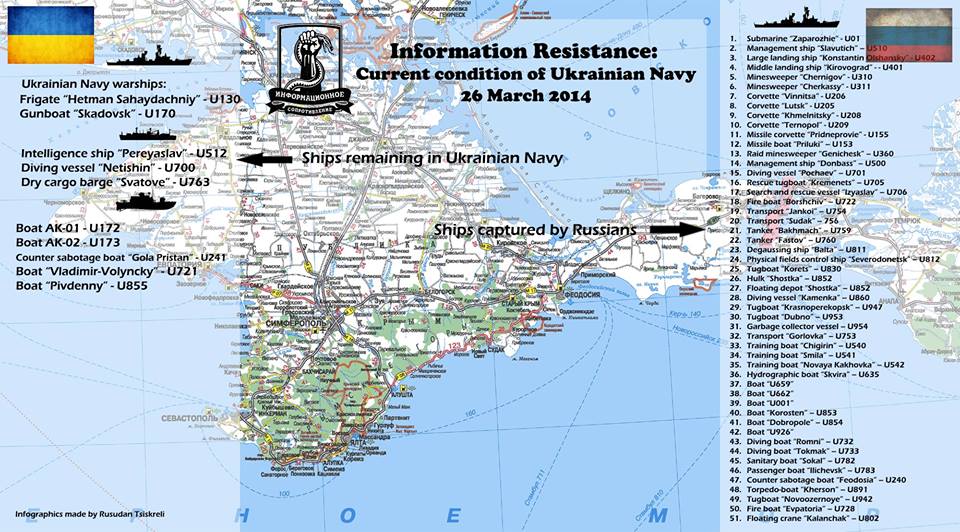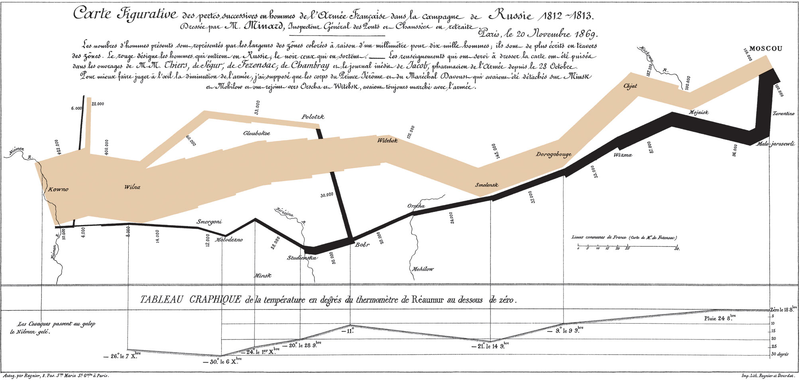In the Telegraph, Con Coughlin says that if NATO doesn’t stand up to Vladimir Putin’s aggressions, it’s done for:
For anyone who still takes the security of the West seriously — and I fear I am in a distinct minority — the manner in which Russian President Vladimir Putin has effortlessly achieved his audacious land grab in the Crimea should serve as a dramatic wake-up call for Nato.
And yet, to judge by the mood music coming from the meeting of Western leaders in The Hague this week, the likelihood of Nato doing anything to dissuade Moscow’s macho man from undertaking any further acts of military adventurism in central Europe or the Baltic states does not seem at all encouraging.
[…]
When faced with a crisis, the default position of Nato member states, as we have seen recently over Libya and Syria, is to bicker amongst themselves over how to respond, rather than coming up with an effective programme that safeguards its interests.
But if Nato leaders fail to come up with an adequate response to Putin’s new mood of military aggression, they might as well dissolve the alliance and start negotiating peace terms with Moscow.

NATO member states in blue, Ukraine in yellow (including Crimea), Russia in red (for tradition’s sake)
Update: Poland is recalling reservists for military refresher training.
Next time you take a tray of tea and custard creams to the nice gang of Polish builders renovating your semi, they may seem a little distracted and anxious. Ask them why, and they will answer that some of them have in the last few weeks received call-up papers as army reservists.
This happened to a friend of mine in London at the end of last week. At least 7,000 reservists have been recalled to the colours for immediate exercises lasting between 10 and 30 days.
They’re told by the Polish authorities that the call-ups are “routine”: but the men say they haven’t been asked before and they’re well aware of the growing alarm in Warsaw at President Putin’s aggression. Three weeks ago, their Prime Minister, Donald Tusk, called a press conference to warn that “the world stands on the brink of conflict, the consequences of which are not foreseen… Not everyone in Europe is aware of this situation.”
My own view is that Putin was initially more concerned with righting a specific historical wrong in Crimea than starting a new Cold War. This is still probably the case despite the dawning truth that the EU/Nato Emperor really has no clothes at all.
But in the worst case scenario of a truly revanchist Russia, Poland certainly has the borders from hell. Starting from the top, it abuts Kaliningrad (the Russian exclave on the Baltic carved at the end of the war from East Prussia), Lithuania, Belarus and Ukraine.




 I just picked this up last night at the “World’s Biggest Bookstore” in Toronto. I’m quite enjoying it, as it discusses much more than just the war itself: about 50 pages in, I think I’ve learned far more about middle eastern history and Russia’s geostrategic problems.
I just picked this up last night at the “World’s Biggest Bookstore” in Toronto. I’m quite enjoying it, as it discusses much more than just the war itself: about 50 pages in, I think I’ve learned far more about middle eastern history and Russia’s geostrategic problems. 

